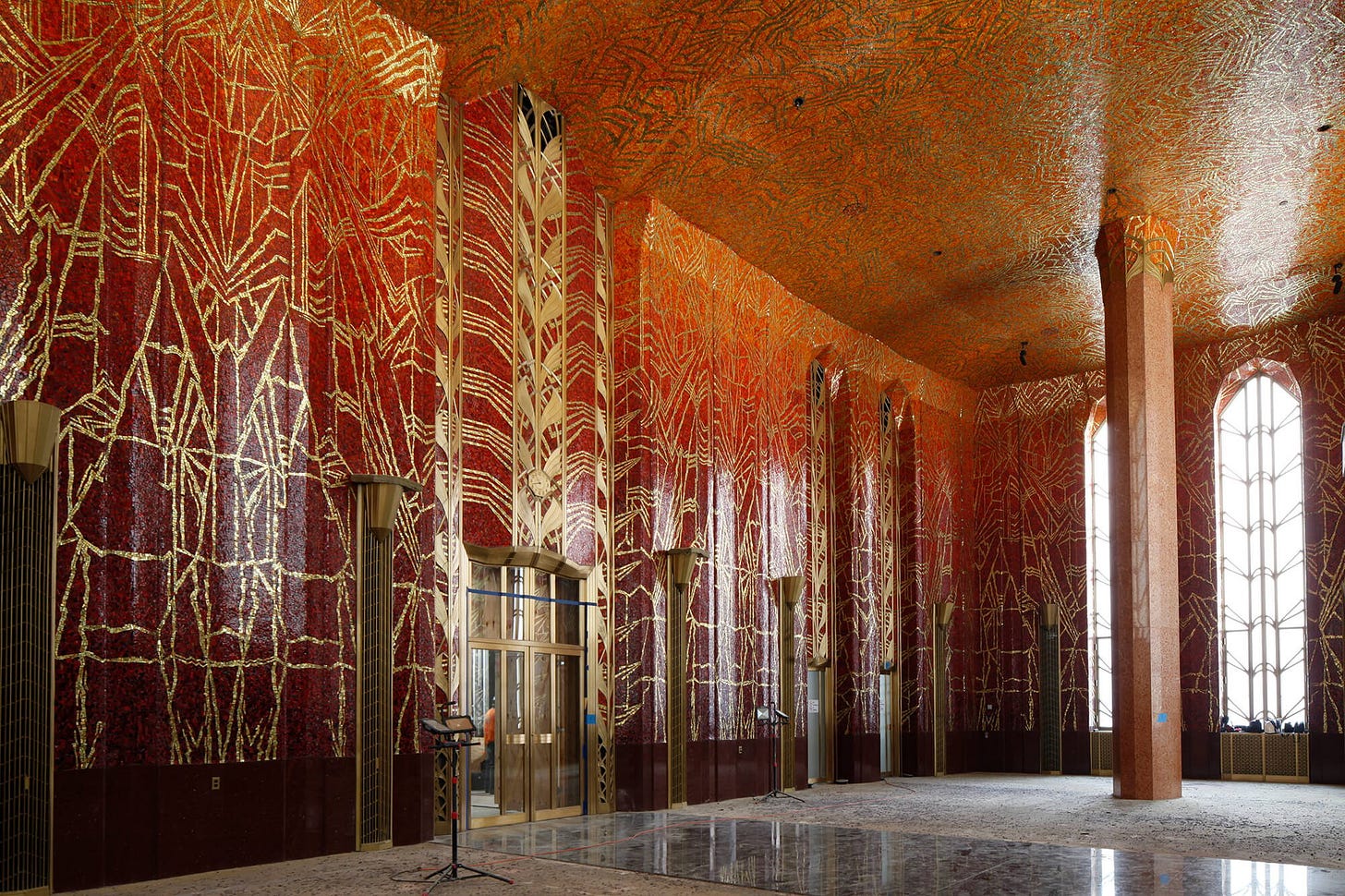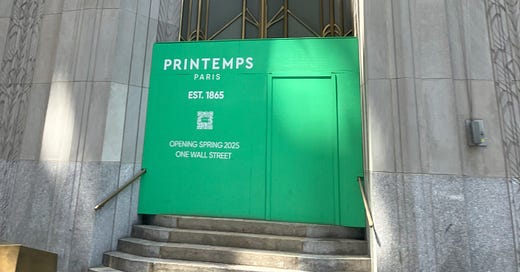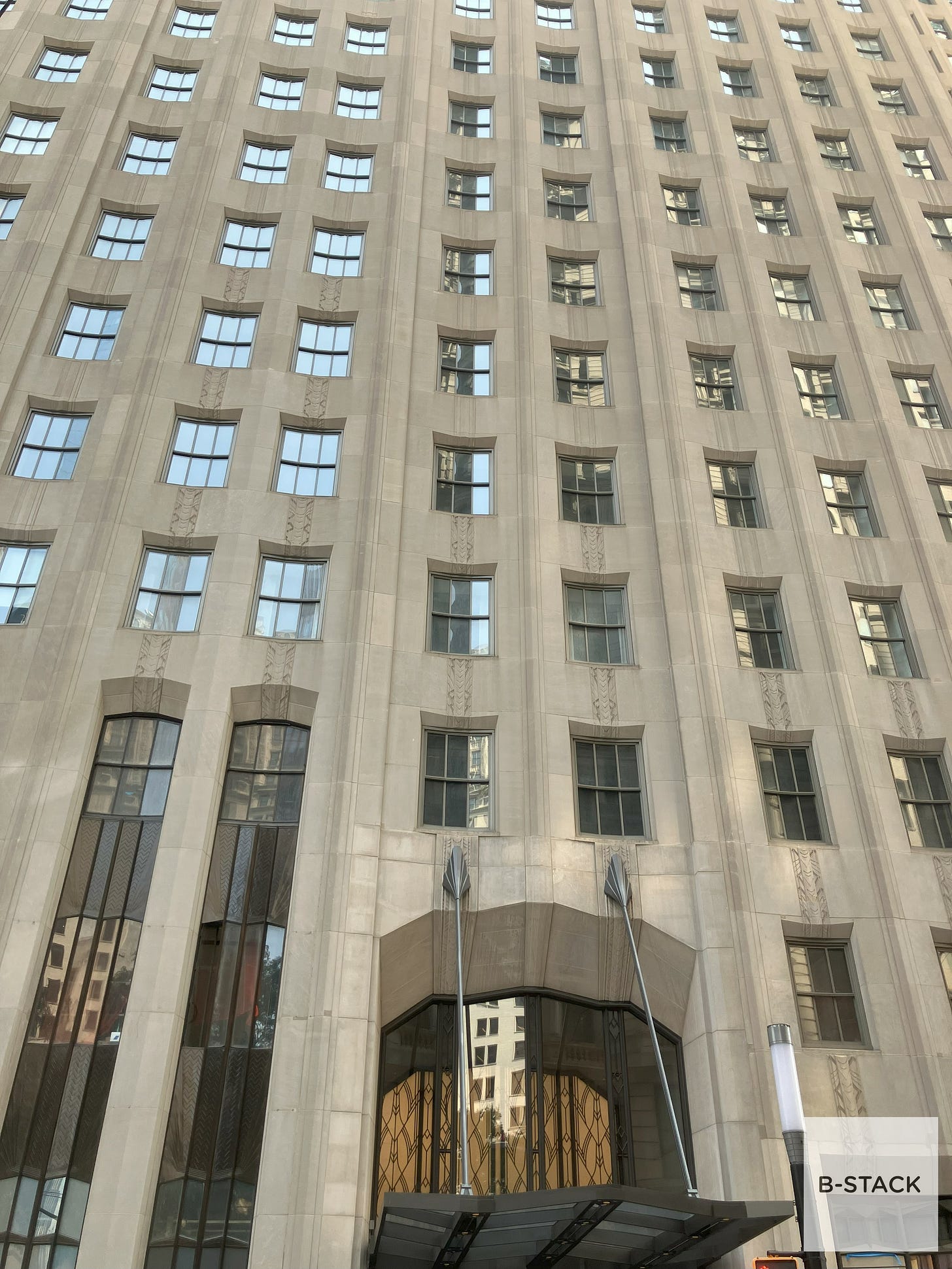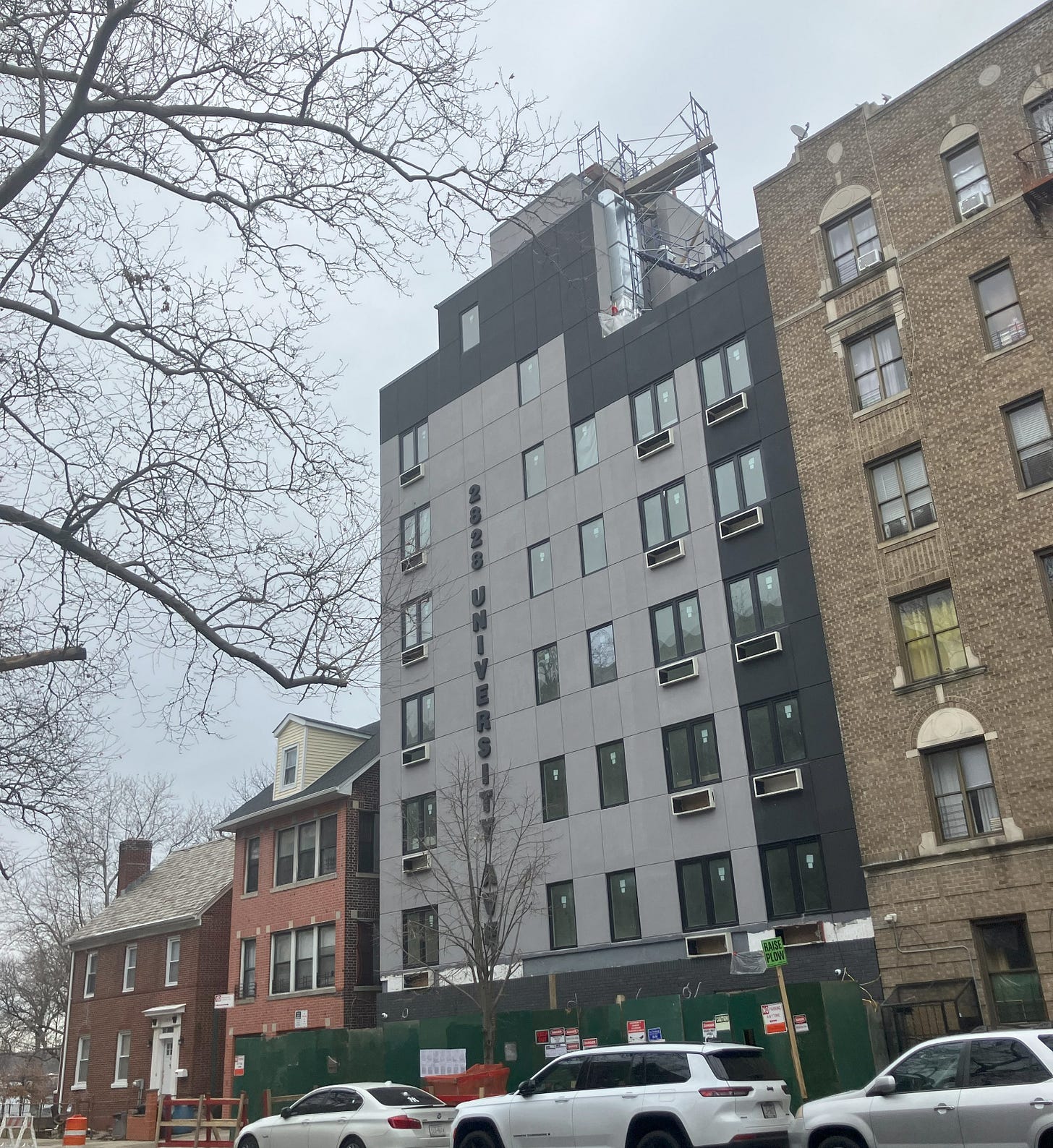Was going to complain here about all of the banal utilitarian housing going up in the Bronx (as if they didn’t know better), but instead want to contrast that garbage with one of New York’s best Art Deco buildings, 1 Wall Street previously known as Irving Trust Building or the Bank of New York Building. Now it has been refurbished (as all great designs should be), most likely because of its sheer size and top location, in the heart of Wall Street’s financial industry.
For a New Yorker, Ralph Walker could be the greatest architect you have never heard of. His Art Deco buildings define the vernacular of downtown Manhattan, near Wall Street, Tribeca and Chelsea. It is a blessing when an older building can find new life, even if its program has morphed from office to residential.
Of course, this doesn’t mean that all office buildings lend themselves to good housing — but 1 Wall Street fits the bill. It also shows how preservation isn’t valuable only in preserving good buildings, but it illuminates design values that have been lost to current generations.
Why? Because it is well-designed. Start with the sculpted limestone facade that gives a jazzy-wave shape to the 50-story mass. The setback tower looks straight out of a Hugh Ferriss rendering (and likely was inspired by one). Go closer and you see monumental doorways and etchings in gold detailing. One entry area is the famed “Red Room” of similar jazz styling — soon to be a shop.
All of this design gives the building dignity. A balance of stone mass with lightness and grace of detailing. Balance is the most underrated quality of buildings that gives their occupants a sense of importance and humanism.
This kind of design strategy should be most common in new housing developments. Instead of monumental lobbies and deco styling we instead get small side doors to a white hallway and elevator. Where’s the dignity in that?
Because it is an office conversion, the 1931 Walker building didn’t have many of the problems in current residential design — no dark interior hallways, no dumb commercial requirements. It is design-first in a design age.


Alright, I cannot resist comparing 1 Wall Street to the sad buildings going up around New York City today, especially in the Bronx. Somehow it became uncouth to ask for more noble and humane design, an Olmsteadian vision of an environment that improves the moral character and healthy wellbeing of residents is now only for the mega rich. You might see the occasional attempt at this at well-covered buildings like Via Verde (which is the exception to the rule), which the city bureaucrats and their cronies at the New York Times use to justify many more garbage developments.
But I know they don’t really care about the design features, only how many people occupy it. If they did, they would be outraged at the inhuman housing being built all over NYC and America.
Most of the new developments look bureaucrat-developer drivel. You have to wonder what the point of a highly-regulated yet impotent architecture industry is. Perhaps it is time to dissolve the industry and reform it around a new vision of openness and quality.
The Bauhaus this is not.
Nothing says “we don’t care” more to the community than this kind of lowest common denominator development. It’s not a matter of cost, as many would tell you. It’s a matter of culture and bureaucracy. “Affordable” developers aren’t required to build monumental entrances, value health, light and air, or bring in artistry so they won’t. But this manifests in lower outcomes for residents as it always does when the architecture tells them they aren’t valuable.
Bad design always costs more in the long run than good.






